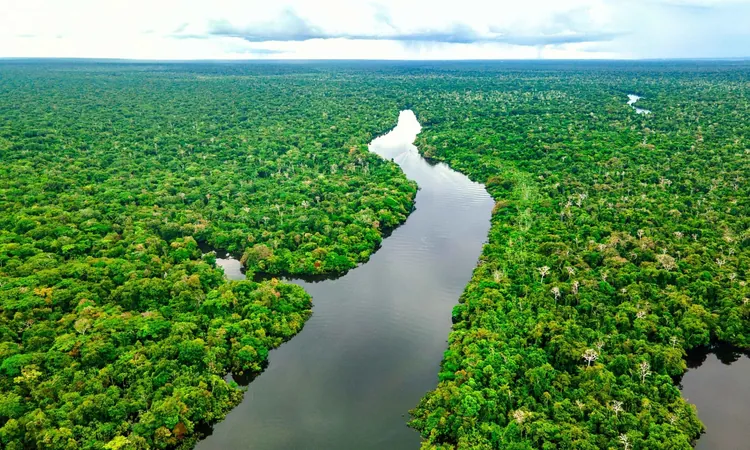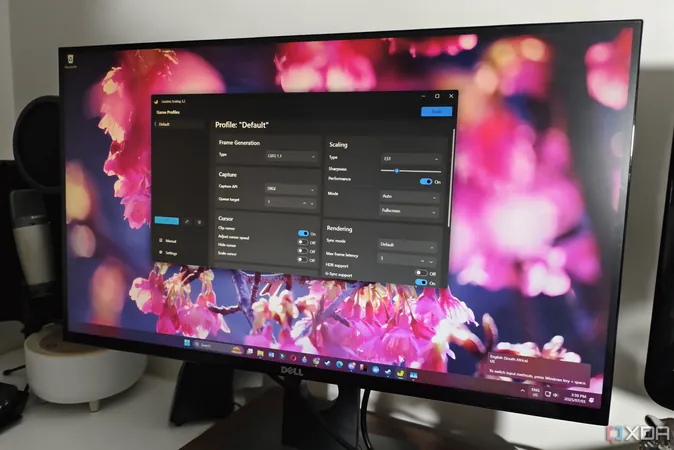
Surprising Rainfall Boost in the Amazon Linked to Weakening Ocean Currents
2025-06-14
Author: Sophie
Ocean Currents: A Hidden Influence on Amazon Rainfall
In the face of climate change, unexpected relationships emerge within our ecosystems. Recent findings reveal that a weakening of the Atlantic Meridional Overturning Circulation (AMOC) could actually enhance rainfall in the southern Amazon during the driest months of the year.
For decades, scientists have closely monitored ocean temperatures and current behavior, uncovering a link between diminished AMOC strength, characterized by cooler northern Atlantic waters, and altered precipitation patterns across South America.
Rainfall Relief Amidst Growing Deforestation
Led by Dr. Annika Högner from the International Institute for Applied Systems Analysis, the research team found a troubling yet intriguing correlation. As the AMOC weakens, rainfall during Amazon's dry season could increase by approximately 4.8% for each million cubic meters per second reduction in its strength.
However, the overall scenario remains dire. Despite this increase, regions of the rainforest still face declines in rainfall due to higher temperatures and ongoing deforestation caused by human activity.
The Crucial Dry Season and Its Vulnerabilities
"The dry season is the weakest link for the Amazon rainforest," commented Högner. The data, gathered over 40 years, illustrates how these cooler northern waters impact moisture transport to the southern Amazon, especially through the Caribbean low-level jet—an essential wind corridor.
A Delicate Balance: Positive Effects vs. Ongoing Challenges
Co-author Nico Wunderling from the Potsdam Institute for Climate Impact Research underscores the complexity of the situation. While the weakened AMOC provides some rainfall support to the Southern Amazon, it competes against alarming factors like deforestation and rising temperatures, which exacerbate dryness.
In fact, despite some relief, the overall trend points towards increased evaporation due to rising temperatures, further increasing the vulnerability of this critical ecosystem.
Tracking Forest Health: A Satellite Perspective
To shed light on this nuanced relationship, researchers employed satellite-derived NDVI data over four decades, enabling them to track vegetation vitality in the southern Amazon. The findings suggest that years of heightened dry season rainfall correlate with improved vegetation greenness and health.
Climate Change: The Unseen Enemy
Although the stable interactions from a weakening AMOC have slowed the decline in dry season rainfall—offsetting around 17% of the rainfall deficit since the early 1980s—this relief is overshadowed by the pervasive warming trends harming the region.
Researchers stress the urgent need to reduce greenhouse gas emissions, as climatic interplay is intricate. A cooling ocean current can't fully remedy the extensive damage caused by escalating temperatures.
Future Outlook: Vigilance Needed in Monitoring
Experts emphasize the importance of continuous monitoring of both the Amazon and the AMOC. The interplay of aerosols, land cover changes, and ocean conditions necessitates close observation, influencing future rainfall patterns.
The Amazon, a beacon of biodiversity and carbon storage for the planet, reveals how oceanic shifts impact its rainfall and, consequently, its overall health.
Protecting a Global Treasure
As the Amazon faces threats like drought and fire, preserving local protections becomes essential. Even minor increases in rainfall during critical dry seasons can significantly impact forest survival, helping to maintain its vital moisture recycling processes.
This study sheds light on the broader ramifications of climate change and underscores the urgency for solutions that not only understand but also support the resilience of our most precious ecosystems.









 Brasil (PT)
Brasil (PT)
 Canada (EN)
Canada (EN)
 Chile (ES)
Chile (ES)
 Česko (CS)
Česko (CS)
 대한민국 (KO)
대한민국 (KO)
 España (ES)
España (ES)
 France (FR)
France (FR)
 Hong Kong (EN)
Hong Kong (EN)
 Italia (IT)
Italia (IT)
 日本 (JA)
日本 (JA)
 Magyarország (HU)
Magyarország (HU)
 Norge (NO)
Norge (NO)
 Polska (PL)
Polska (PL)
 Schweiz (DE)
Schweiz (DE)
 Singapore (EN)
Singapore (EN)
 Sverige (SV)
Sverige (SV)
 Suomi (FI)
Suomi (FI)
 Türkiye (TR)
Türkiye (TR)
 الإمارات العربية المتحدة (AR)
الإمارات العربية المتحدة (AR)